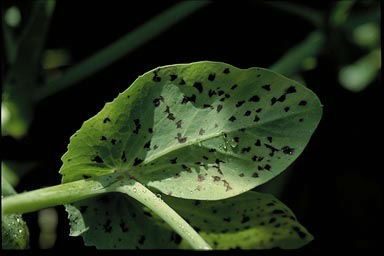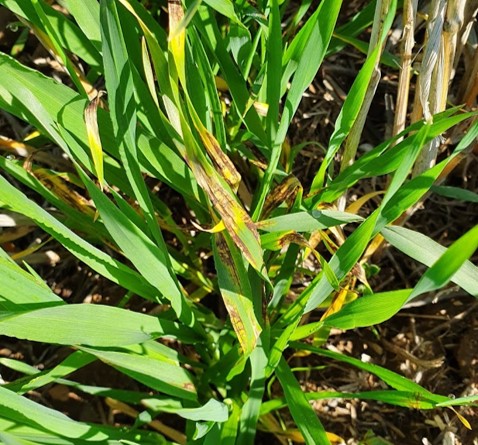Crop Watch April 2022

Blackspot manager forecasts released
The early Blackspot Manager forecasts point to a high to medium risk of blackspot in seedling field pea crops sown late April to early May across South Australia in 2022.

The risk identified in Blackspot Manager is associated with the number of spores released from last year’s stubble. Actual disease severity will also depend on rainfall patterns during crop establishment as moisture is necessary for the spores to germinate and infect the plants.
Spores released with rainfall in late autumn and winter, when new crops are emerging and establishing, will lead to a high risk of blackspot establishing in crops. Numerous rainfall events will increase disease severity, but if dry conditions persist and there are few rainfall events then very little disease will eventuate irrespective of spore numbers.
What you can do to reduce crop disease risk
Several actions can reduce your crop disease risk, including:
- planting this year’s crop at least 500 metres from field pea stubble. If downwind from the stubble, increase this distance up to 1 kilometre if possible since the spores are windblown
- delaying the sowing date by 2 to 3 weeks following opening rains in medium to high rainfall districts where this is unlikely to compromise yield. The spore numbers in the air will reduce over the 2 to 3 week window and reduce the blackspot risk. Delayed sowing is not an option in low rainfall, short season districts as associated yield losses will be greater than losses caused by blackspot disease
- consider fungicide strategies as an option in crops that have a yield potential of at least 1.5 tonnes a hectare. P Pickel-T seed dressing will reduce infection on seedling crops, and foliar fungicide sprays will reduce the spread of the disease. Sprays can be applied between 4-8 nodes; apply at 4 nodes if disease is present but delay towards 8 nodes if disease is not evident. A second spray is needed at early flowering to reduce spread of the disease in spring. For maximum effect, spray ahead of a rain event, since spores are spread during rainfall. Post rain spraying is generally ineffective. Several products are registered for control of blackspot of field peas. Note label restrictions for chlorothalonil with respect to grazing stock.
View Blackspot Manager forecasts for 2022.
More from this edition
Volunteer plants increase disease risk
Higher than average rainfall in many areas of the state in January and February has led to a rise in the number of volunteer or self-sown plants.

Significant green bridges going into the 2022 season have been reported on the Yorke and Eyre peninsulas, but other areas of the state will also be affected. Green bridges created by volunteer plants or plant material on roadsides and paddock perimeters can increase disease and pest risks early in the growing season.
Growers should be aware of stubble-borne diseases starting on volunteers such as barley net blotches (net form net blotch and spot form net blotch) and wheat powdery mildew. Disease on volunteers can increase inoculum levels early in the season and drive disease epidemics through spore levels within the region. Soil-borne diseases such as rhizoctonia root rot can also be hosted on volunteer cereals and increase the disease risk in the crop.
Rust disease levels in the eastern states in the 2021 growing season, combined with the significant green bridge, have led to high inoculum levels of wheat stripe rust. Subsequently, pathologists in the eastern states are issuing stripe rust warnings for the 2022 growing season. While stripe rust levels in SA last year were not significant, the risk from the eastern states combined with green bridges in SA are cause for growers to be alert going into the 2022 growing season.
For effective green bridge control, weeds and volunteers should be completely dead four weeks prior to sowing. With the season break drawing close, this window is rapidly closing. In areas where the green bridge has increased the risk of diseases and pests, growers are encouraged to monitor crops early this season to aid effective disease management.
More information on green bridge control and the associated pest and disease risks can be found in this GRDC factsheet.
More from this edition
Stay up to date with the latest disease-related issues and solutions for broadacre crops during the growing season.

